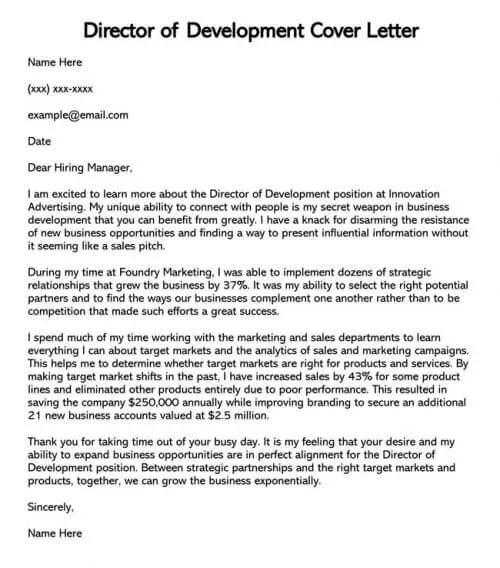Crafting the Perfect Director of Development Cover Letter
A well-crafted cover letter is your key to unlocking the door to your dream job as a Director of Development. It’s your first impression, a chance to showcase your unique qualifications and passion for the role. This article provides a comprehensive guide to creating a compelling cover letter that highlights your skills, experience, and achievements, ultimately increasing your chances of landing an interview. The cover letter is not merely a formality; it is a crucial marketing tool that allows you to present yourself as the ideal candidate, emphasizing your ability to drive fundraising efforts and contribute to the organization’s mission. A strong cover letter sets the stage for a successful application.
Understanding the Role and Responsibilities
Before you start writing, understand the core responsibilities of a Director of Development. This understanding is paramount for tailoring your cover letter to the specific requirements of the role. Development Directors are responsible for overseeing fundraising initiatives, building and maintaining donor relationships, and creating long-term strategic plans to support organizational goals. They often manage teams, prepare budgets, and ensure compliance with relevant regulations. A clear grasp of these responsibilities will allow you to highlight the most relevant skills and experiences in your cover letter, demonstrating your understanding of the position and your ability to excel in it. Focusing on what the role requires is essential.
Highlighting Relevant Skills and Experience
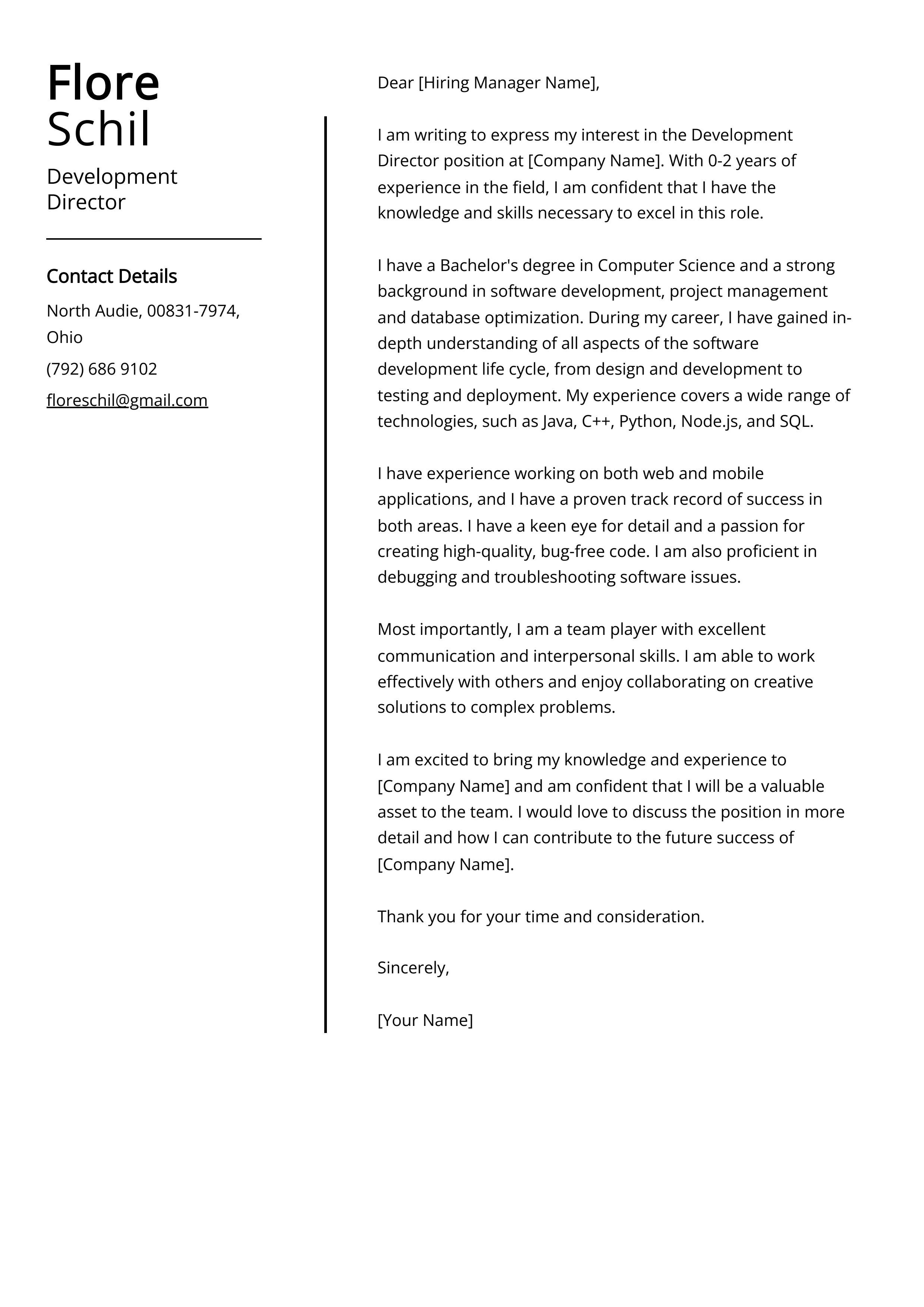
Your cover letter should showcase your relevant skills and experience, emphasizing how they align with the job requirements. Focus on quantifiable achievements and provide specific examples of your past successes. Use action verbs to describe your accomplishments, such as “managed,” “increased,” “developed,” and “secured.” This approach helps the hiring manager quickly grasp your capabilities and the impact you’ve made in previous roles. The goal is to convince the reader that your skills and experience match their needs and that you’re the best candidate for the job. Always tailor your resume, too.
Fundraising and Donor Relations
Emphasize your experience in fundraising, including the types of fundraising you’ve managed (e.g., grants, major gifts, annual campaigns) and your success in securing donations. Detail your ability to cultivate and maintain relationships with donors, as this is a critical aspect of the role. Highlight your experience in organizing fundraising events, developing donor stewardship programs, and utilizing donor management systems. Explain your success in building relationships that lead to sustained giving. Demonstrate your understanding of fundraising best practices and your ability to meet or exceed fundraising goals. Make it clear you can secure funding!
Strategic Planning and Leadership
Highlight your leadership abilities and your experience in developing and implementing strategic fundraising plans. Describe your ability to lead and motivate a team, set goals, and drive performance. Show your experience in analyzing fundraising data, identifying trends, and making data-driven decisions. This includes skills such as experience in developing and implementing comprehensive development plans. Showcase your ability to align fundraising efforts with the organization’s overall strategic goals and mission. Make sure to explain how you plan to bring your goals to this specific role.
Budget Management and Financial Acumen
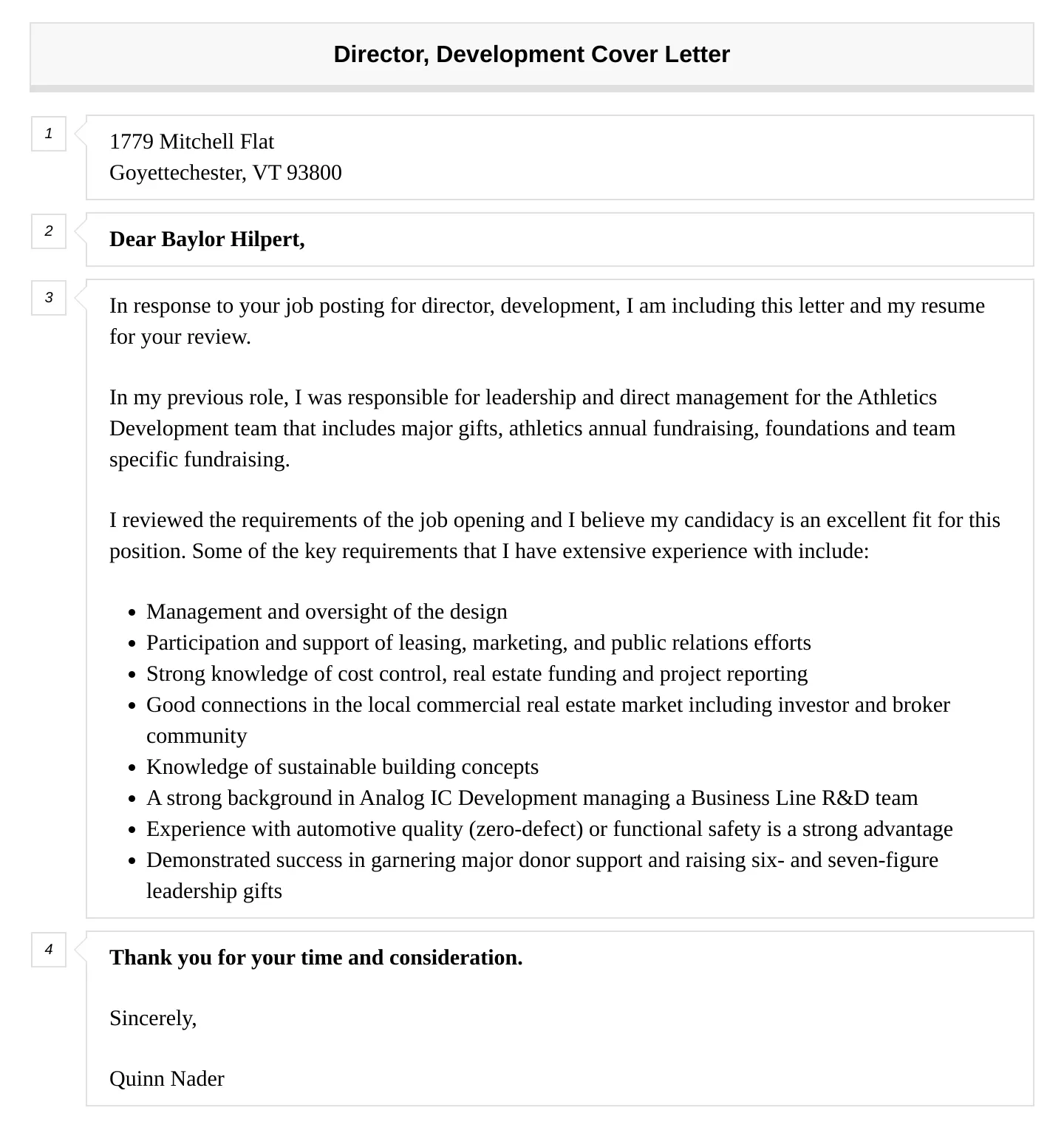
Demonstrate your ability to manage budgets, track expenses, and ensure financial accountability. Include examples of how you’ve successfully managed fundraising budgets and achieved financial targets. Highlight your understanding of financial reporting and your ability to analyze financial data to inform decision-making. This includes the ability to develop and manage budgets, ensuring fiscal responsibility. If possible, show your experience in working with finance teams to ensure alignment between fundraising activities and financial goals. The ability to manage money is a must.
Showcasing Achievements and Impact
Quantifiable results are the key to demonstrating your impact. Instead of simply listing your responsibilities, use numbers and data to illustrate your accomplishments. For instance, instead of saying, “Managed a fundraising campaign,” say, “Managed a fundraising campaign that raised $1 million, exceeding the target by 20%.” This provides concrete evidence of your capabilities and allows the hiring manager to easily assess your contributions. The more detail you include, the better your chances are of being selected for a job. If you were a leader, make sure to state that.
Quantifiable Results
Always include numbers to show your impact. Use metrics like: percentage increases in donations, the amount of grants secured, the number of new donors acquired, and the efficiency of fundraising campaigns. This quantifiable data creates a compelling argument for why you are the right fit for the role. Quantifiable results will help show how you’ve made an impact in your previous position. These examples will demonstrate your ability to generate results and your commitment to organizational success. The more quantifiable results you provide, the stronger your cover letter becomes, and the more you will stand out from the competition.
Building a Strong Narrative
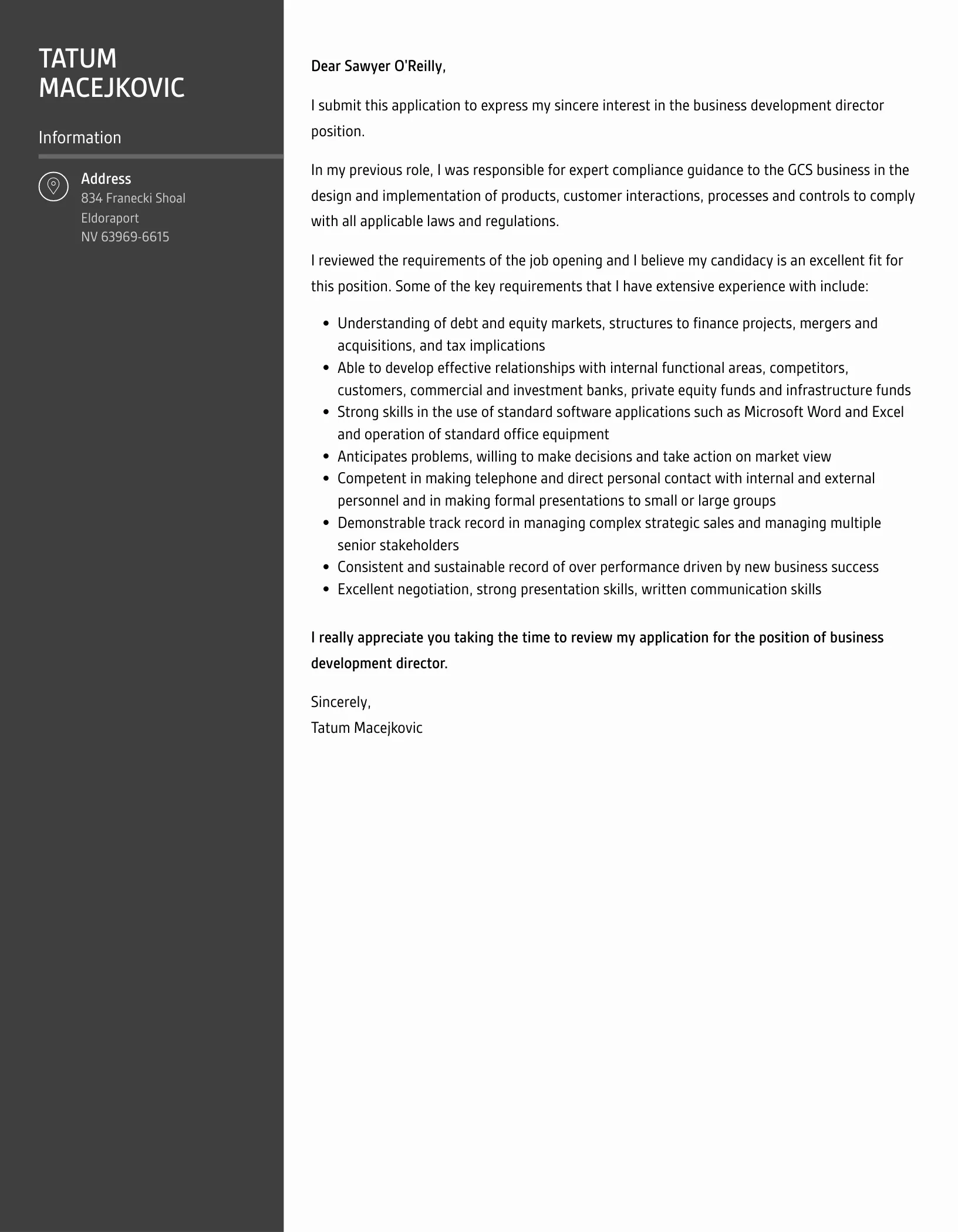
Your cover letter should tell a story. Connect your experiences, skills, and achievements to the needs of the organization and the specific job requirements. Start with a compelling introduction that captures the reader’s attention. Then, weave a narrative that highlights your relevant experiences and how they align with the organization’s mission and values. Your narrative should be clear, concise, and engaging. Finish with a strong call to action, expressing your enthusiasm for the opportunity and inviting the hiring manager to learn more about you. This will help you make an impression on the hiring manager.
Structuring Your Cover Letter
A well-structured cover letter is easy to read and highlights your key qualifications. Use a professional font and clear formatting. Break your letter into distinct sections, including a header, greeting, introduction, body paragraphs, and a closing. Make sure to keep it concise and focused. Use bullet points and concise language to make your information accessible and easy to digest. A well-organized structure helps guide the reader through your qualifications and makes a positive impression. A clean structure is essential to help the hiring manager.
Header and Contact Information
Start with a professional header that includes your contact information: your name, address, phone number, and email address. Include the date and the hiring manager’s name and title, if available. If you’re unsure of the hiring manager’s name, research the organization’s website or LinkedIn profile to find this information. This ensures your application looks professional and easy to reach. A professional header sets the tone for your application.
Greeting and Introduction
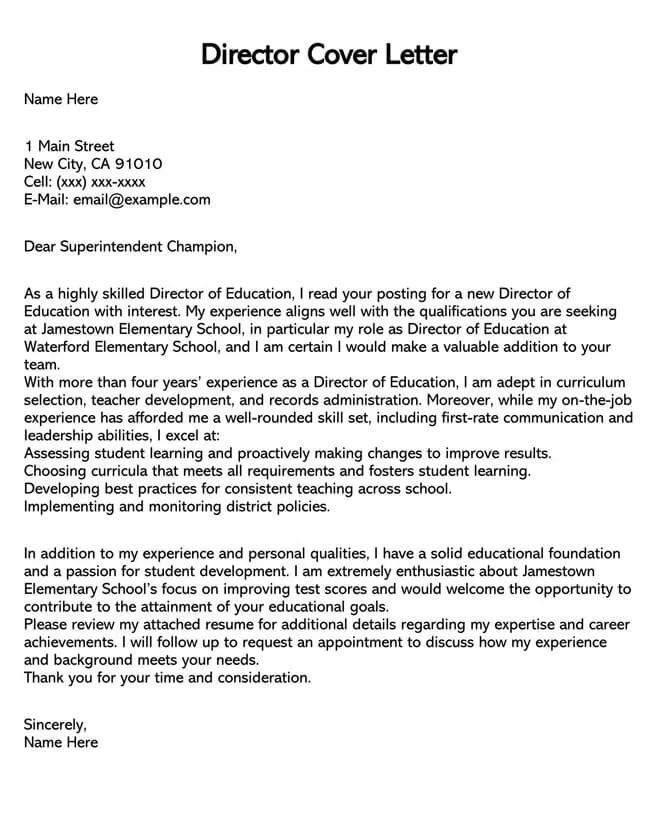
Address the hiring manager by name to personalize your letter. In the introduction, state the position you are applying for and briefly mention why you are interested in the role. This sets the stage for the rest of your cover letter and captures the reader’s attention. Clearly state the position and the key reason you are applying. Make sure to state your interest and enthusiasm for the opportunity. This will also help the hiring manager with who you are.
Body Paragraphs: Skills and Experience
The body paragraphs are the core of your cover letter. Use them to highlight your relevant skills and experience. Each paragraph should focus on a specific skill or experience. Include specific examples and quantifiable results to demonstrate your impact. Tailor your content to match the job description and the needs of the organization. Make sure to include achievements and quantifiable data points that show the impact you’ve made. This will also show how your work aligns with the needs of the position.
Closing and Call to Action
In your closing, express your enthusiasm for the opportunity and reiterate your interest in the position. Thank the hiring manager for their time and consideration. Include a clear call to action, such as requesting an interview or offering to provide more information. End with a professional closing, such as “Sincerely” or “Best regards,” followed by your name. This reinforces your interest in the position and makes it easy for the hiring manager to take the next step.
Common Mistakes to Avoid
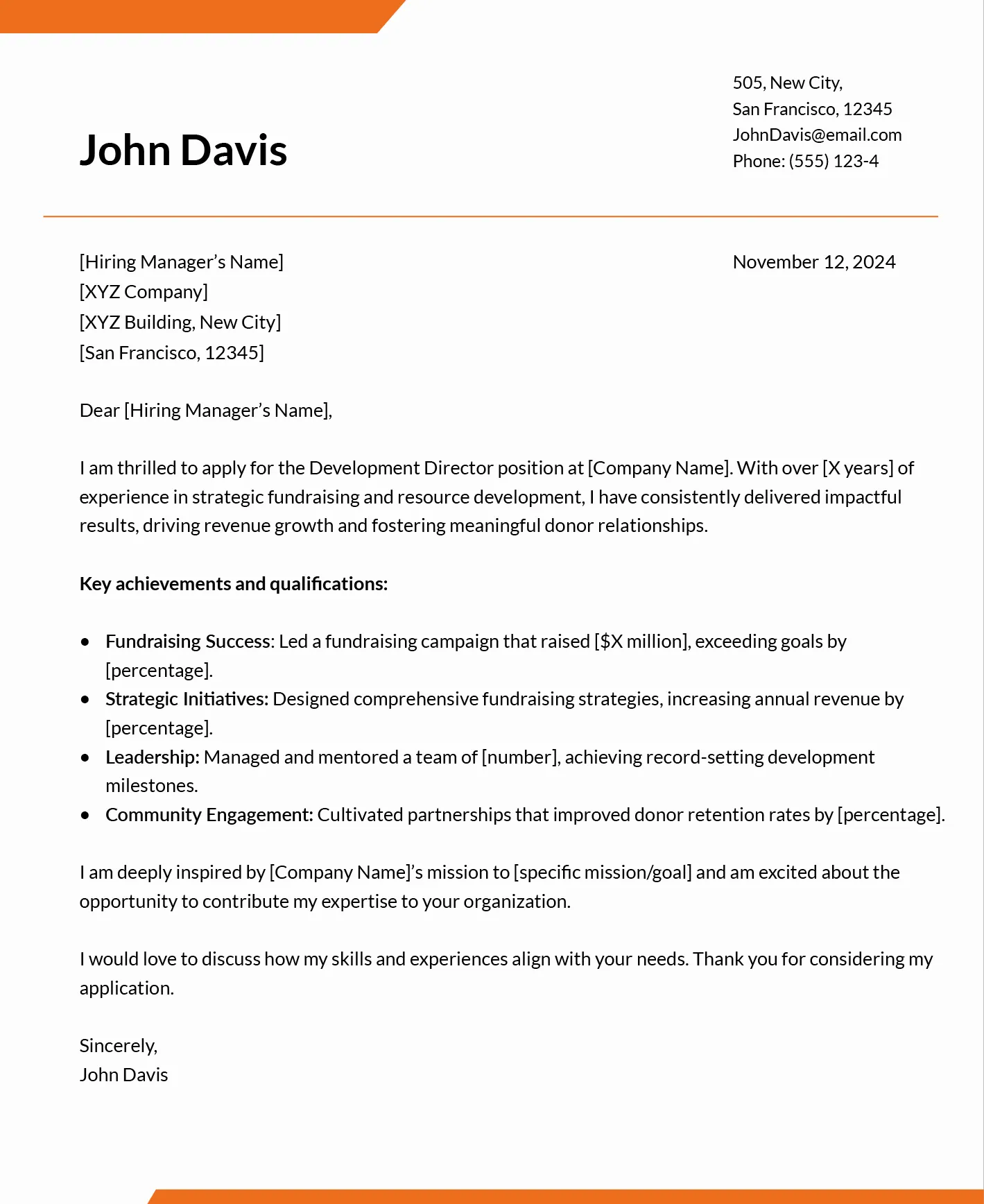
Avoid common mistakes that can undermine your application. Pay attention to details and proofread your cover letter carefully. Ensuring that the language is professional and well-structured is essential to make a good impression. Make sure to address the specific requirements of the role and show why you’re the best candidate. By avoiding these pitfalls, you can make sure that your cover letter helps, and doesn’t hurt, your chances of getting hired. Always double-check the letter.
Generic Language and Lack of Personalization
Avoid using generic language and clichés. Instead, tailor your cover letter to the specific organization and the job requirements. Show that you have taken the time to research the organization and understand their mission and values. Use specific examples to illustrate your skills and experience, rather than relying on generic statements that could apply to any candidate. A personalized letter demonstrates your genuine interest and increases your chances of getting noticed. Avoid using generic phrasing.
Focusing Solely on Job Duties
Focusing solely on job duties without highlighting your achievements is a common mistake. Instead, focus on your accomplishments and the impact you have made in previous roles. Quantify your results whenever possible, and use action verbs to describe your accomplishments. This is especially important when showcasing your experience, which is highly valued. Highlight accomplishments that showcase the value you brought to the organization. This allows the hiring manager to easily see your value and capabilities.
Ignoring the Organization’s Mission
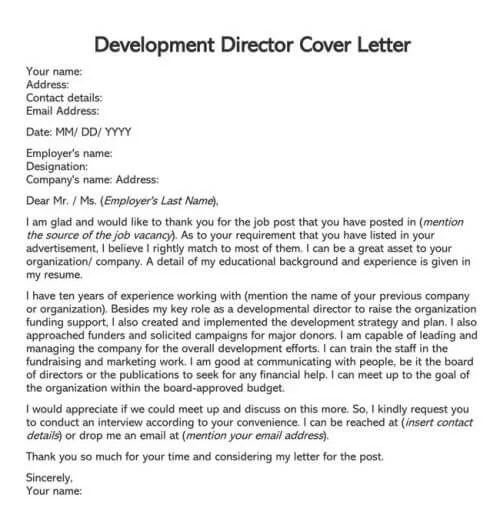
Many candidates miss the opportunity to show their commitment to the organization’s mission and values. Research the organization and its mission before writing your cover letter. In your letter, express your understanding of the mission and your alignment with its goals. Mention how your skills and experience can contribute to the organization’s success. This will make you stand out from other candidates. This shows you are a great fit for the role.
Formatting and Proofreading Errors
Errors in formatting, grammar, and spelling can create a negative impression. Proofread your cover letter carefully to ensure there are no errors. Use a professional font, and ensure your letter is easy to read and well-organized. Ask someone to review your letter before submitting it. These errors will significantly detract from your professionalism and make you look careless. A polished and error-free cover letter reflects your attention to detail and commitment to quality.
Tailoring Your Cover Letter
Tailoring your cover letter to each job application is essential. The more specific you are, the better. This shows you’ve taken the time to research the organization and the specific requirements of the role. Customize your content to match the job description. Highlight the skills and experiences that are most relevant to the position. Demonstrating how your qualifications align with the organization’s needs increases your chances of getting noticed. It is very important to tailor your resume, too.
Researching the Organization
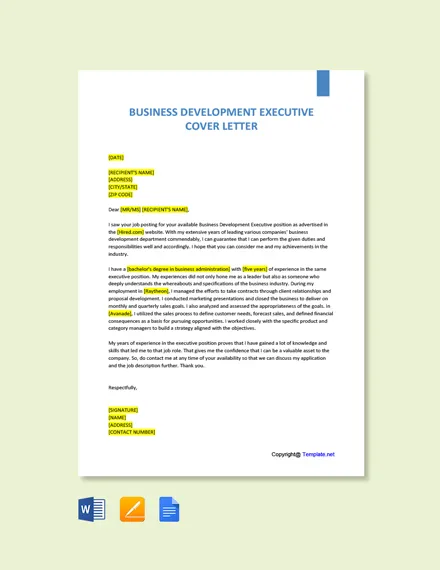
Before writing your cover letter, research the organization and its mission. Visit their website, review their social media presence, and read any recent news articles or press releases. Understand the organization’s values, goals, and recent achievements. This information will help you tailor your cover letter to demonstrate how your skills and experience align with their needs. A thorough understanding of the organization will make your cover letter much more effective.
Identifying Key Requirements
Carefully review the job description and identify the key requirements and qualifications. Make a list of the skills, experience, and qualifications the organization is seeking. Use these requirements as a guide to tailor your cover letter. Highlight how your skills and experience meet these requirements and how you can contribute to the organization’s success. This is an essential first step that will help you tailor your letter.
Customizing Your Content
Customize your cover letter by highlighting the experiences and skills that are most relevant to the job description. Use the language of the job description to show that you understand the requirements. Include specific examples of your achievements that align with the organization’s needs. Your cover letter will be much more powerful if you tailor it to the job. Tailor your application to stand out.
Finalizing and Submitting Your Cover Letter
Before submitting your cover letter, take a few final steps. Make sure your cover letter is free of any errors in grammar, spelling, and formatting. Use a professional font, and ensure the letter is easy to read. Save your cover letter as a PDF file to preserve the formatting. Send your cover letter and resume as attachments, if required. Follow the instructions provided in the job posting carefully. Your cover letter should be perfect before submission. These tips will help you on the next step.
